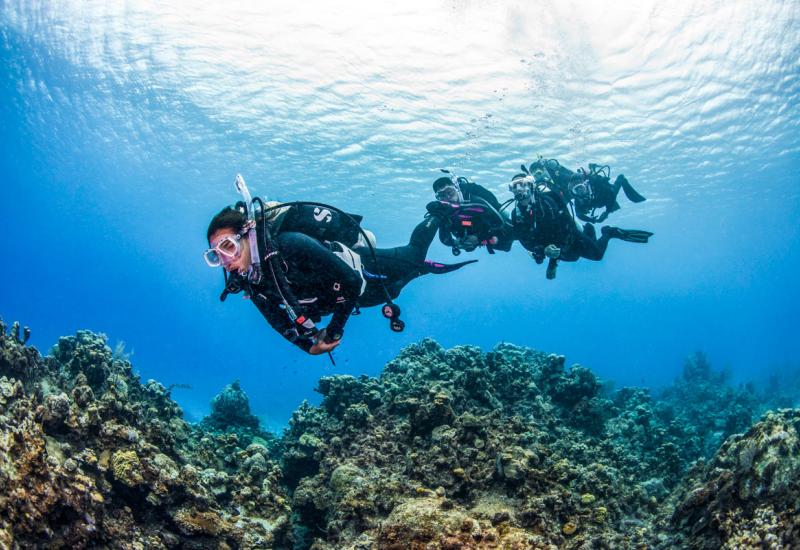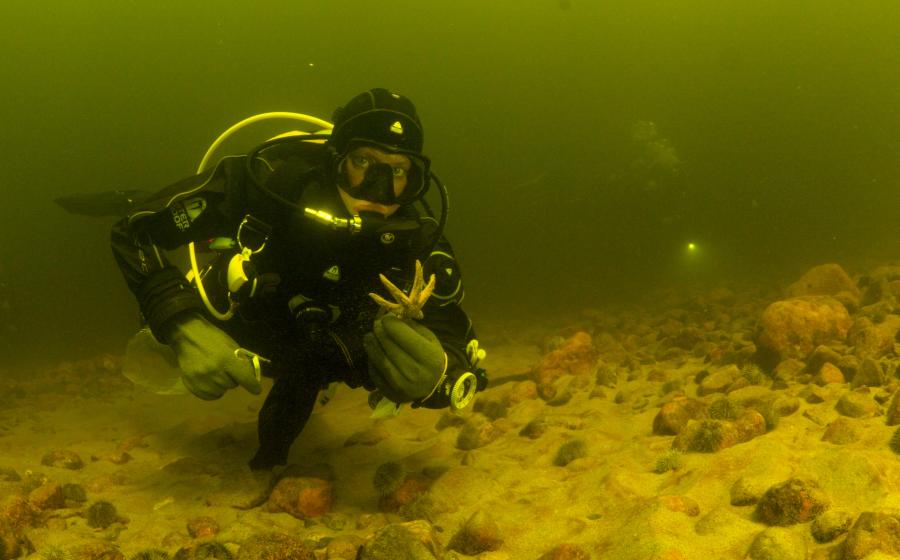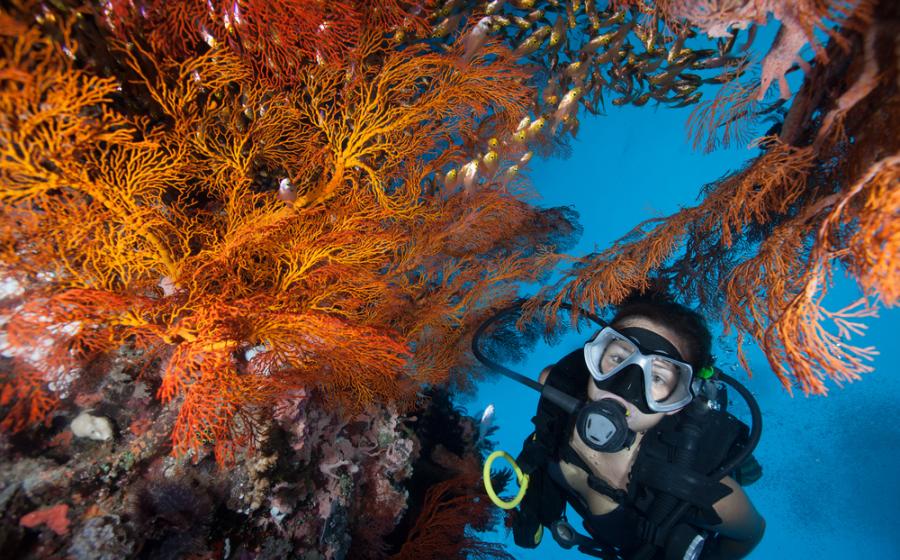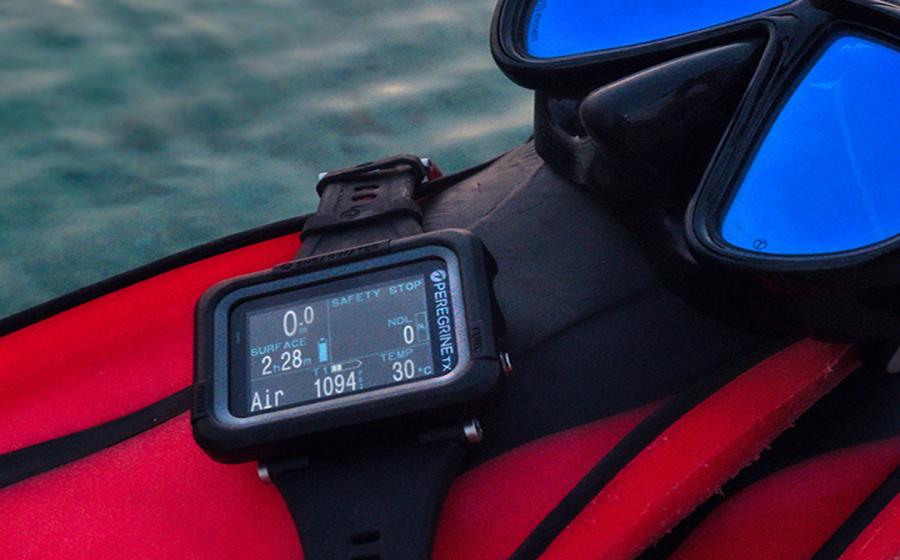Deep Diving 101: What You Should Know
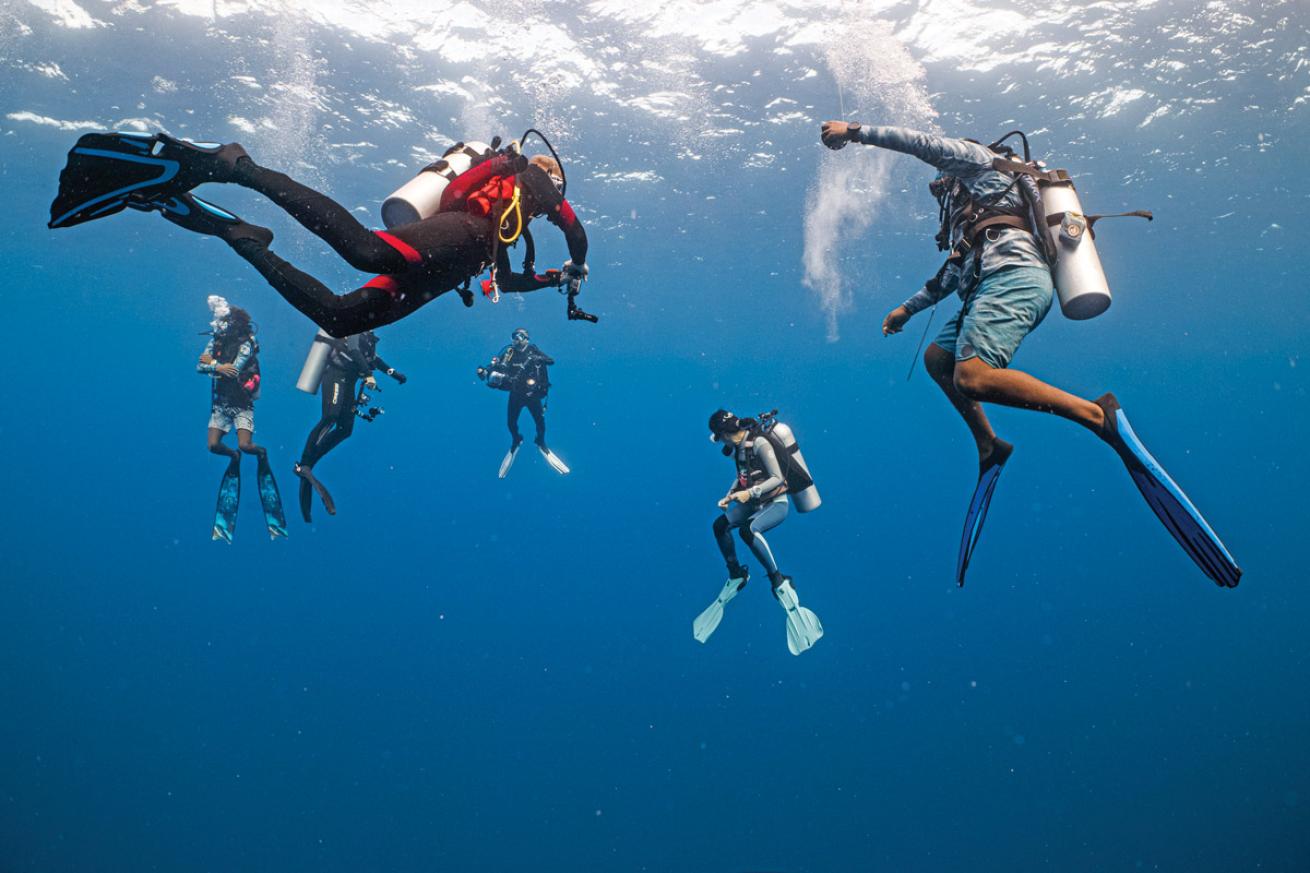
Annie CrawleyAlways check in with your buddy or guide before starting your dive to agree on a planned depth and discuss personal diving histories, experience levels and comfort.
The temptation of going deep on a dive is real. There’s something spectacular about being in warm, blue water, with light plunging down to the abyss as sharks and mantas cruise by.At the same time, divers must respect their personal limits and the safety considerations that are essential for deep-diving safety.
Scrolling the variety of scuba social feeds, it’s common to want to experience what other people are sharing and get the beautiful shot yourself, even when the setting is at a depth beyond your training.
I’ve recently witnessed and heard stories of divers with GoPros in hand, pushing limits and getting into dangerous situations—all for the ability to capture and post their video on social media.
Nitrogen impacts divers at depth, and an untrained person may unknowingly go deeper, stay longer, or increase the potential for injury on deep dives.
It’s important to plan your dive and carry it out based on your experience level and that of your buddy.
Going to deeper depths increases your risk of a dive-related injury.If you are going deep, there are special considerations and equipment you need to protect yourself.
You will learn about these during the PADI Deep Diver specialty course.You will also practice a variety of skills, including breathing from your buddy’s alternate air source during a safety stop.
Related Reading: How to Master Underwater Navigation and Dive Like a Pro
Due to increasing ambient pressure, the deeper you dive, the more air you use.Check your air more frequently, and set alerts on your computer to prevent an out-of-air emergency.
Be aware of the effects of gas narcosis and how to deal with it.Always have an emergency oxygen first-aid kit available when embarking on a deep dive.Every reputable dive operator carries emergency oxygen on their vessel or in their vehicle. Know where it is kept and the emergency action plan.
If you plan to do deep diving in a location without a staged hang tank, carry a redundant air supply, such as a pony or bail-out bottle.Most airlines will allow you to check an empty small tank that is disconnected from the valve.
Always do a thorough buddy check before diving.Wear two computers and follow the most conservative one on your dive.
Plan your thermal protection for the depth of your dive. Remember that your suit will become more compressed and provide less warmth the deeper you go.Because of this, you need to dress for the temperature at depth. In lakes, there are often thermoclines with a 20-degree difference between the surface and your maximum depth.
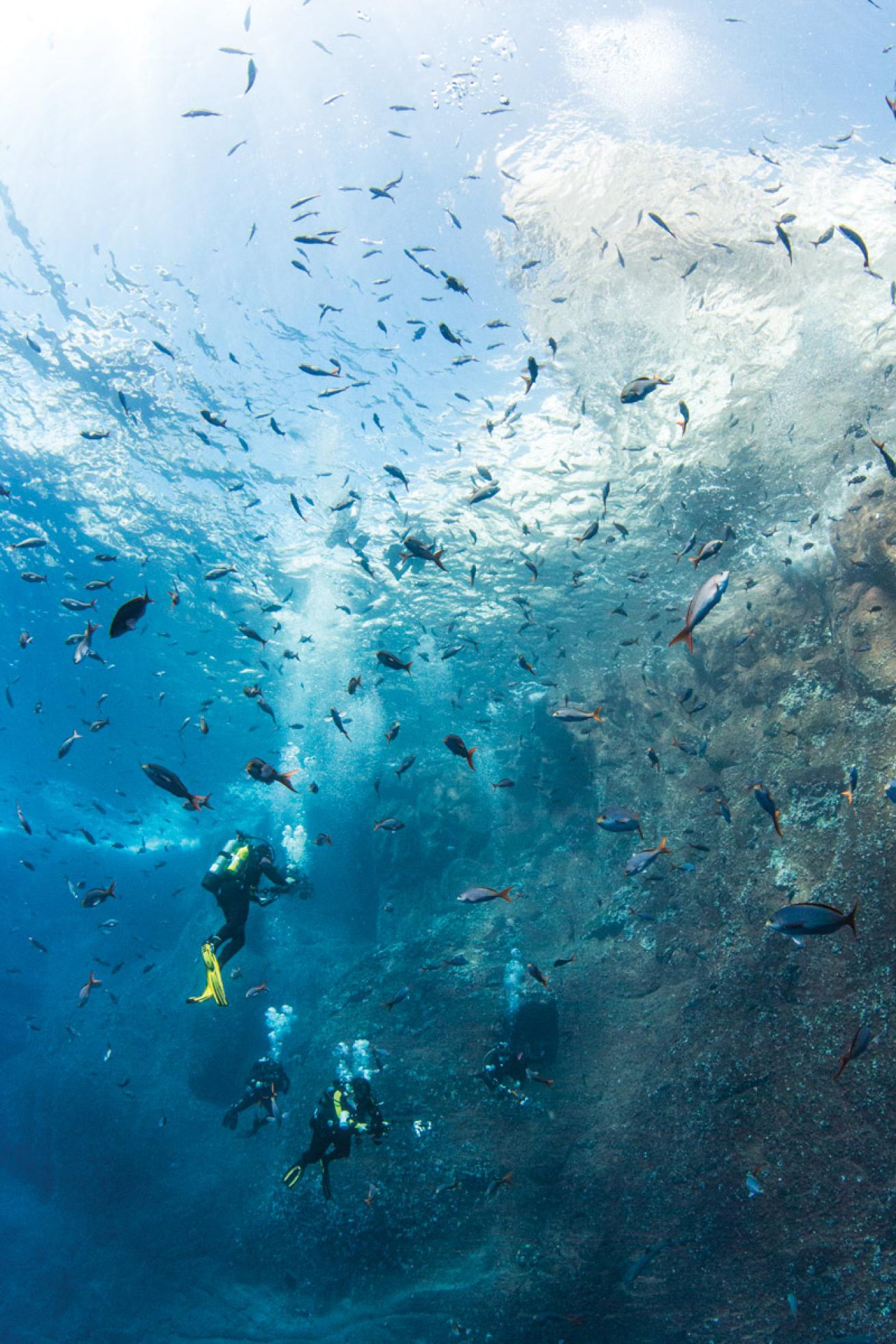
Annie CrawleyWhen diving with a group, you must still adhere to your personal limits and level of training first, even if others choose to go deeper.
On a recent trip to the Maldives, I was completely blown away by the 250 individual tiger sharks identified at Fuvahmulah.For decades in this small region of the world, local tuna fishermen have cleaned their fish and thrown the waste into the water, attracting tiger sharks.They’ve created a circus where you can predictably dive with tiger sharks up close and personal in about 30 feet of water.
Because of social media, it’s become a popular destination to dive, with many operators popping up to capitalize on this unusual phenomenon.Due to its popularity, you are usually limited to one shallow tiger shark dive per day during the busy season.If you want to dive more, you can visit some of the other underwater attractions in the area, such as pinnacles, walls, and other deeper dives for thresher sharks.
Thresher sharks can be found at shallower depths around 60 feet, but they are more likely to be beyond recreational depth limits of 130 feet.During the week-long trip, I listened to untrained deep divers talk about their ventures. They ran low or out of air, stressed their ears, and experienced mask squeeze when they forgot to equalize their ears and mask.Listening to these stories, I helped them understand what went wrong and how they can avoid problems in the future.
It’s not cool to go deep or take a buddy deep without proper training.When in a remote location without a recompression chamber, it’s important to dive more conservatively.
Related Reading: How to Make the Most of Your Drysuit
If you want to dive shallower or you feel uncomfortable with the planned depth of a dive, communicate with the divemaster to come up with an alternate plan.Avoid making the first dive of a trip a deep one, and do a checkout dive in shallower water in any new or unfamiliar location.
Not all operators around the world monitor divers in the same way.Some require you to stay with a professional, while others support exploring as buddy teams.
There are no scuba police that come with sirens blaring to check the depth and length of your dive. It is your responsibility to be safe.As explorers, it’s normal to seek adventure, but you must respect your training and experience. Just because others in a group go deep, it does not mean you need to follow them down.Always come up with a plan and remain within your personal limitations. Choose a buddy who understands and respects your choices.
The PADI Deep Diver specialty course focuses on helping divers make smart decisions for a stress-free, deep-diving experience with an emphasis on safety.The course takes two days, with a minimum of four deep dives.
PRO TIP
On every deep dive, you need to have a primary light and a backup light in case of emergency.In many locations around the world, a deep dive can be more like a night dive, and you want to have a backup light in case of primary light failure.


